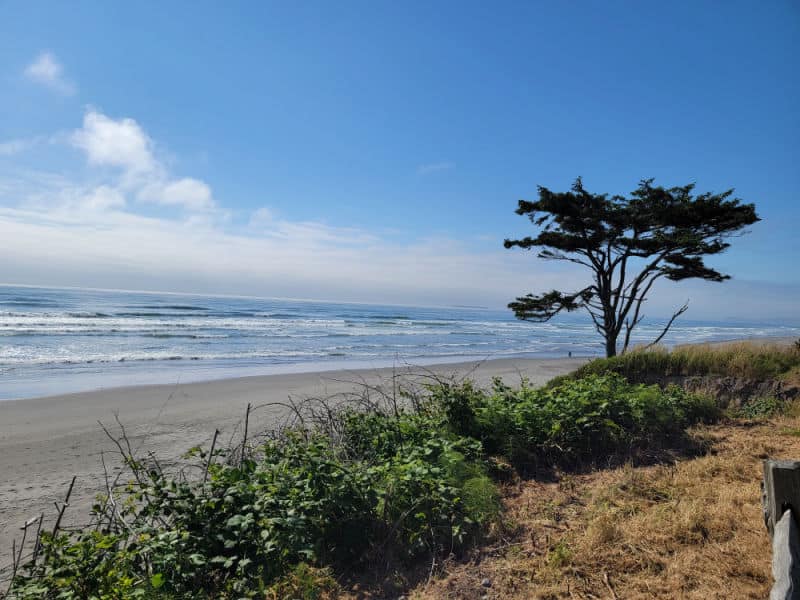Located in the State of Washington, on the Olympic Peninsula is one of the country's most diverse National Parks, Olympic National Park. Nestled between the Puget Sound and the Pacific Ocean, this vast national park houses several gems of nature and is an ecosystem within itself.
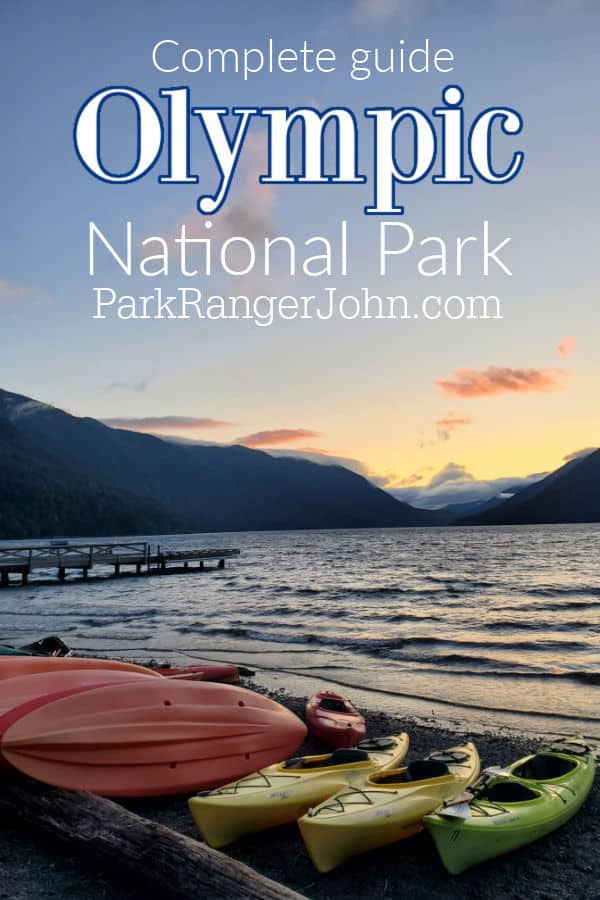
Olympic National Park
Olympic National Park is sure to leave you in awe of its beauty because there's so much to see in every direction that you glance in.
It'll truly feel like heaven on earth with the Pacific coastline's stunning sandy beaches on one end and snow-clad majestic mountains on the other.
It's also home to a temperate rainforest, which is extremely rare and results from a particular mode of climate, alpine meadows, lakes with fresh glacial water, hot springs, and so much more.
You'll get a chance to explore nearly every natural wonder within the boundaries of the park, witness wild animals like the Black Bear, Roosevelt Elk, and, if you get lucky, even spot an Orca Whale!
There's no shortage of activities and excursions at the National Park and whichever ones you choose to do, and all the sights you choose to see, there's no way you don't go back home in awe of the dream that Olympic National Park truly is!
From temperate rain forests to glacier capped mountains you are going to fall in love with the park.
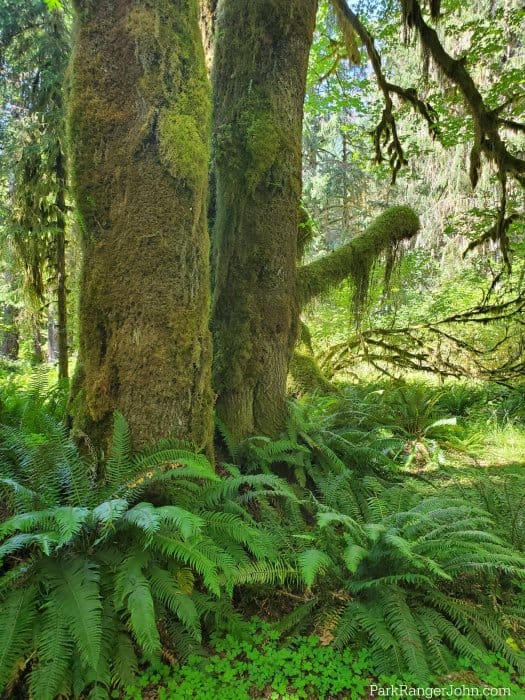
About Olympic National Park
Featured in most top 10 National Parks in the US lists, the Olympic National Park is one of the most diverse parks with so much to see and explore. The park is nearly one million acres big, encompassing a variety of ecosystems, making it a place that everybody is sure to love!
It houses glaciated mountains (Blue Glacier, the park's biggest glacier which descends from Mount Olympus, the park's highest peak is as big as over twenty trillion ice cubes), temperate rainforests (that receive up to 12 feet of rainfall annually, so plan your trip accordingly), stunning beaches and tide pools along the Pacific coast where you can observe aquatic life (grey whales, sea lions, and more) and soak in the serenity of the crashing waves.
The Olympic National Park has so much to offer for everyone; it has well-equipped lodges with unobstructed scenic views of the forests for those looking for a getaway, magnificent lakes (like lake crescent, which is so clear that you'll be able to see over 50 feet down into it) to take in for those searching for a moment of peace and serenity. Mountain trails can be traversed by amateurs and peaks that challenge even professionals in harsh conditions.
Come Summer, Winter, or Fall; each season brings the opportunity to experience this natural gem with different activities. Due to the vast region mainly being devoid of light pollution, the starry night sky view is unbeatable; on clear days, you'll be able to witness nebula, constellations, and even planets (as stars, of course) with the naked eye.
Besides the ecological wonders, the Olympic National Park is also the habitat of animals like the Roosevelt Elk (named after President Roosevelt who established the region as a National Park), Black Bears, Marmots, Banana Slugs (which is an integral component of the region's ecological restoration as it serves as the natural composter), River Otters, Sea Lions, Grey Whales, Mountain Lions (if you get lucky), and the list goes on.
So whether you choose to walk through the Hall of Mosses at the famous Hoh rainforest, take a dip in the waters at Fairholme Beach, or drive up to the Deer Park Campground and enjoy mountain views (or indulge in any of the other several activities), you're sure to have a once-in-a-lifetime experience at Olympic National Park!
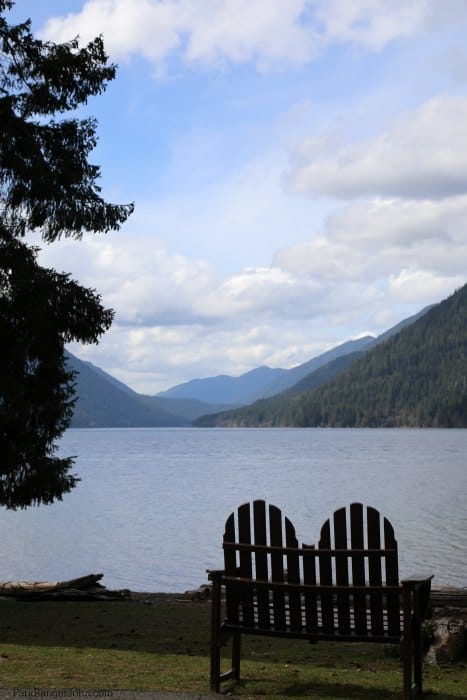
Is Olympic National Park worth visiting?
Yes! We absolutely love Olympic NP! You can enjoy everything from mountains to the Pacific Ocean in one National Park trip.
This is one of our favorite West Coast National Parks to spend time exploring. Even after multiple visits to the park, we keep finding new things to enjoy.
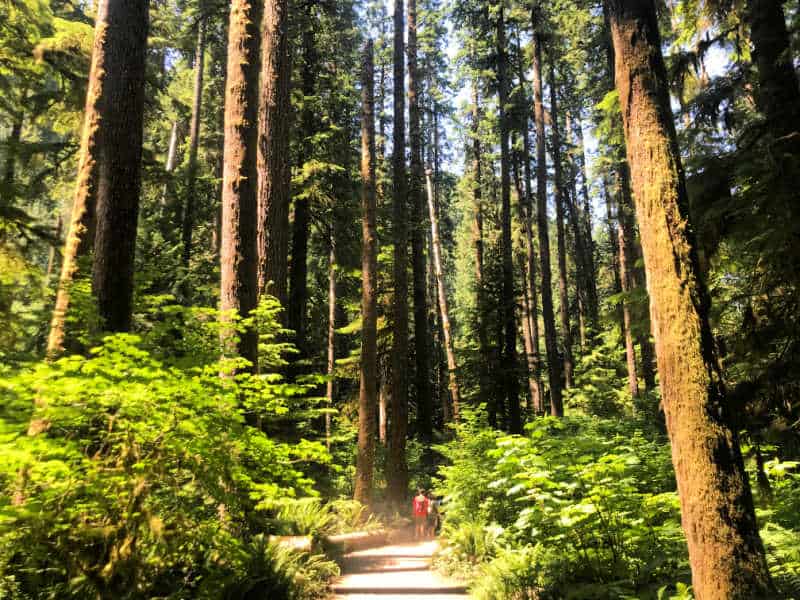
History of Olympic National Park
Olympic National Park has a vibrant history and has gone through many different phases of life to be the national icon that it is today.
Though it was established as a National Park in 1938, the integral history of the region dates back to the 1800s. The local communities indigenous to the region played and continue to play an essential role in the nature and wildlife of the area.
Eight of these tribes, namely - the Makah, Quileute, Hoh, Quinault, Skokomish, Port Gamble S'Klallam, Jamestown S'Klallam, and Lower Elwha Klallam, have inhabited the region for centuries, generation after generation, and have maintained strong bonds with the nature now within the lines of the National Park.
Ever since its discovery, the region has seen millions of visitors looking to experience all different faces of nature; the mountains, the beaches, and the forests, all in one place. Several naturalists, politicians, and outdoor enthusiasts back in the day pushed for the region to be declared as a National Park.
In 1897, the area received recognition as the Olympic Forest Reserve from President Grover Cleveland, who was concerned about the declining forests and wanted to guard the region against ecological destruction.
In 1909, President Teddy Roosevelt re-designated a segment of the area as the Mount Olympus National Monument to safeguard the rapidly declining population of the Elk (later renamed Roosevelt Elk).
President Franklin Roosevelt visited the Olympic Peninsula region in 1937 and a year later signed the act that established the region as a National Park in 1938. In 1953, the Pacific coast region was also added to the area of the Olympic National Park.
Ever since being declared a National park, the area has received accolades from around the world. In place of its immense diversity, scenic views, and variety of flora and fauna, UNESCO in 1976 declared the region an International Biosphere Reserve as part of the Man and the Biosphere Program. Then in 1981, it was designated the prestigious status of a World Heritage Site.
The park's rich history and attachment to indigenous tribes of the region significantly contribute to the vastly heterogeneous and magnificent area it is known as today.
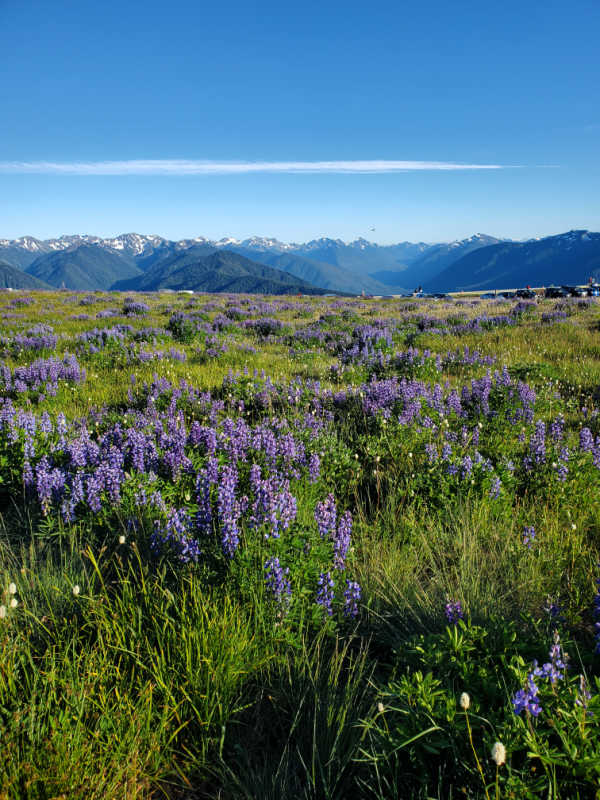
Things to know before your visit to Olympic National Park
Olympic National Park Entrance Fee
Park entrance fees are separate from camping and lodging fees.
Park Entrance Pass - $30.00 Per private vehicle (valid for 1-7 days from the date of purchase)
Park Entrance Pass - Motorcycle - $25.00 Per motorcycle (valid for 1-7 days from the date of purchase)
Per-Person Entrance Pass - $15.00 Visitors 16 years or older who enter on foot, bicycle, or as part of an organized group not involved in a commercial tour.
Annual Park Entrance Pass - $55.00, Admits pass holder and all passengers in a non-commercial vehicle. Valid for one year from the month of purchase.
$75.00 for Commercial Van with 7-15 seats
$100.00 for Commercial Mini-Bus with 16-25 seats
$200.00 for Commercial Motor Coach with 26+ seats
Learn more about National Park Passes for parks that have an entrance fee.
$80.00 - For the America the Beautiful/National Park Pass. The pass covers entrance fees to all US National Park Sites and over 2,000 Federal Recreation Fee Sites for an entire year and covers everyone in the car for per-vehicle sites and up to 4 adults for per-person sites.

Buy your pass at this link, and REI will donate 10% of pass proceeds to the National Forest Foundation, National Park Foundation, and the U.S. Endowment for Forestry & Communities.
National Park Free Entrance Days -Mark your calendars with the five free entrance days the National Park Service offers annually.
Time Zone
PST - Pacific Time Zone
Pets
Pets are permitted on the following trails:
- Peabody Creek Trail
- Rialto Beach parking lot to Ellen Creek (½ mile)
- The beaches between the Hoh and Quinault Reservations (Situated in the Kalaloch area)
- Madison Falls Trail (Elwha)
- Spruce Railroad Trail (Located on the North shore of Lake Crescent)
- July Creek Loop Trail (Located on the North shore of Lake Quinault)
Besides the trails listed above, pets are not permitted anywhere else. Not in public buildings, on interpretive walks, or in the wilderness. Pets are allowed within campgrounds, picnic areas, and paved or dirt roads, but no digging or rolling on plants is permitted.
Become a Bark Ranger
Your well-behaved dog can become an official Olympic National Park Bark Ranger! You must learn the rules of BARK and how to best tour and explore Olympic National Park with your pet, and you'll get a chance to earn a Bark Ranger Badge. You can check out the park's newspaper to learn more about the program and where to get your badge from!
Cell Service
Cell Service is hit and miss in the park. It depends on the day, which region of the park you're in, and what connection you may have. Cell service is believed to work best at Heart o'the Hills at the foot of Hurricane Ridge, Dungeness Spit, and Rialto Beach, though it still depends on your carrier.
Park Hours
The Olympic National Park is open 24 hours a day year-round, although some roads, campgrounds, and facilities are open seasonally.
All roads and facilities have different hours and could be closed considering the current health crisis, weather conditions, or other reasons. Be sure to check out The Bugler, the Olympic National Park's official newspaper, for up-to-date info on attractions and road closures.
Wi-Fi
For the most part, the Olympic National Park doesn't have Wi-Fi. There are limited regions with Wi-Fi in the National Park lodges - Lake Crescent Lodge (only available in the lobby), Lake Quinault Lodge (30-minutes complimentary for all guests, paid after that, but still can be spotty since the lodge is in a remote location), Log Cabin Resort (only available in the lobby).
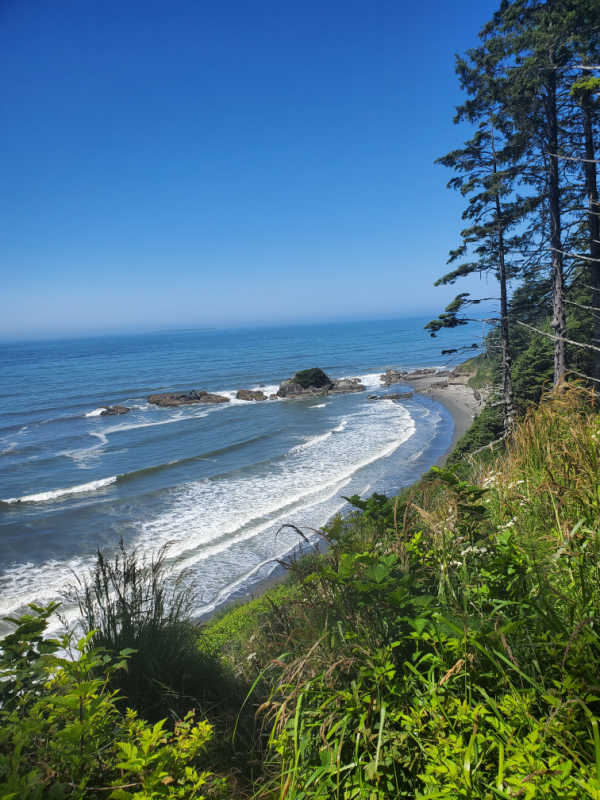
Parking
There are large parking lots available at most of the major attractions like Hurricane Ridge, the Hoh Rainforest, and Kalaloch Beach.
Some of the smaller trails and attractions may have smaller parking lots that can be difficult for RVs to find space.
Food/Restaurants
There are several restaurants within the Olympic National Park, most of which are housed by the National Park lodges.
Sunnyside Cafe at the Log Cabin Resort
Overlooks the spectacular Lake Crescent and is open only during the summer months. It has an extensive breakfast (8 am to 11 am) and dinner menu (4 pm to 8 pm) with sandwiches, homemade pizzas, pulled pork, fish and chips, and more. You can also enjoy outdoor seating to have a meal with a view.
Lakefront dining room & Singer Tavern at the Lake Crescent Lodge
These two spots overlook the Lake Crescent and offer stunning views of the surroundings. Open from May until January (though Summer and Winter timings differ, so be sure to check those out); it offers a unique farm-to-fork concept with its Northern Pacific Cusine, paired with signature wine from the Pacific North wine regions.
Springs Restaurant at the Sol Duc Hot Springs Resort
Serves delectable dishes made using locally sourced ingredients throughout the day and offers a take-a-to-go drink and food option for those wanting to eat on the go. With a varied menu, its dinner offering is undoubtedly the best with fresh seafood, poultry, exception appetizers, and desserts that will impress you.
Roosevelt Dining Room at the Lake Quinault Lodge
With a stunning view of Lake Quinault and its surrounding peaks, here you'll be able to dine in luxury at a place that President Roosevelt enjoyed lunch during the visit where he became certain that the Olympic region had to be established as a national park. You'll also be able to get meals to-go here and gorge on delights like Kestner's Cherry Chicken Sandwich, Wild King Salmon, and more. It's open during the summer months.
Gas
There are no gas stations within the park.
There are gas stations available in Forks, Port Angeles, and other neighboring communities.
National Park Passport Stamps
National Park Passport stamps can be found in the visitor center.
We like to use these circle stickers for park stamps so we don't have to bring our passport book with us on every trip.
The National Park Passport Book program is a great way to document all of the parks you have visitied.
You can get Passport Stickers and Annual Stamp Sets to help enhance your Passport Book.
Olympic NP was featured in the 1988 Passport Stamp Set
Electric Vehicle Charging
Within the park, you will find EV charging stations at Lake Crescent Lodge, Kalaloch Lodge, and Sol Duc Hot Springs Resort.
Nearby you can find an EV Charger at Lake Quinault Lodge, in Forks and Port Angeles.
Don't forget to pack
Insect repellent is always a great idea outdoors, especially around any body of water.
We use Permethrin Spray on our clothes before our park trips. Please read my article on preventing biting insects while enjoying the outdoors.
Sunscreen - I buy environmentally friendly sunscreen whenever possible because you inevitably pull it out at the beach.
Bring your water bottle and plenty of water with you. Plastic water bottles are not sold in the park.
Sunglasses - I always bring sunglasses with me. I personally love Goodr sunglasses because they are lightweight, durable, and have awesome National Park Designs from several National Parks like Joshua Tree, Yellowstone, Hawaii Volcanoes, Acadia, Denali, and more!
Click here to get your National Parks Edition of Goodr Sunglasses!
Binoculars/Spotting Scope - These will help spot birds and wildlife and make them easier to identify. We tend to see waterfowl in the distance, and they are always just a bit too far to identify them without binoculars.
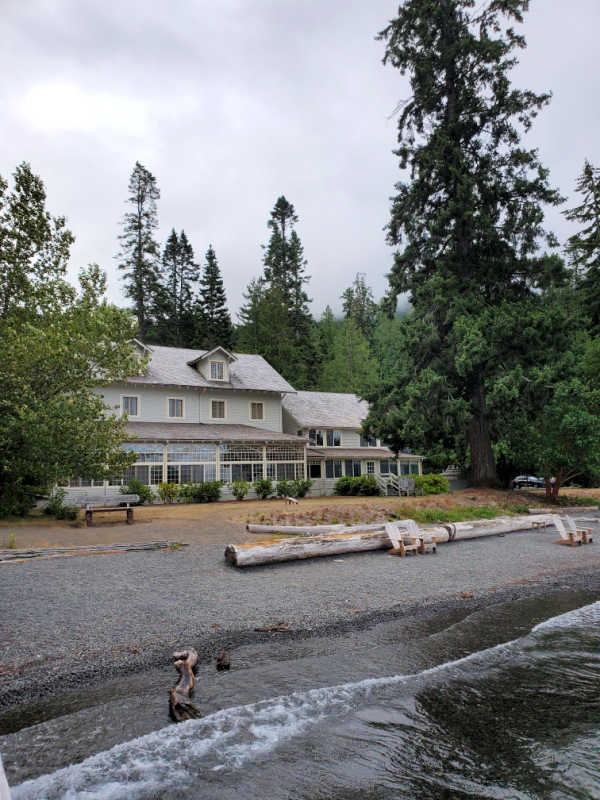
Details about Olympic National Park
Size - 922,649 acres
The Olympic National park covers 922,649 acres, and it is currently ranked at 13 out of 63 National Parks by Size. Over 95% of the park is designated wilderness, protecting one of the largest wilderness areas in the lower 48.
Date Established
The area was initially declared a national monument in 1909 by President Teddy Roosevelt.
Soon after, the monument was re-designated as the Olympic National Park by President Franklin Roosevelt in 1938.
It was established as an International Biosphere Reserve by UNESCO and then, in 1981, was declared a World Heritage Site.
Visitation
In 2020, Olympic NP had 2,499,177 park visitors.
In 2019, Olympic NP had 3,245,806 park visitors.
Olympic National park is one of the top 10 most visited National Parks in the United States.
Learn more about the most visited and least visited National Parks in the US
National Park Address
Olympic National Park Visitor Center
3002 Mount Angeles Road
Port Angeles, WA 98362
Olympic National Park Map
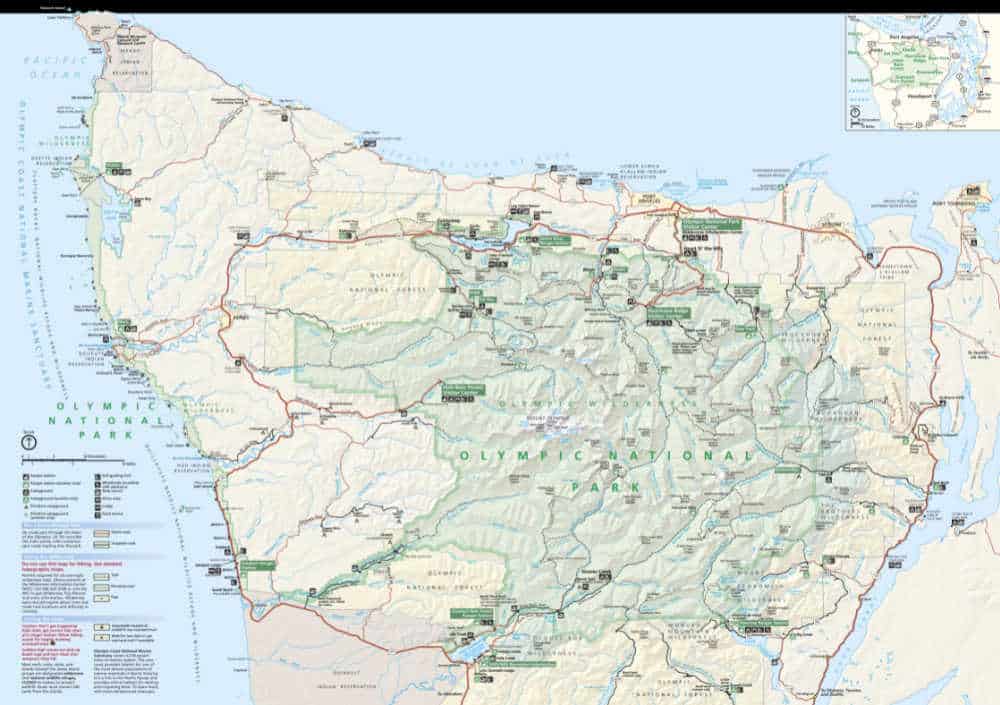
If you want a detailed map of the park check out the the National Geographic Trails Illustrated Map for Olympic NP available on Amazon.
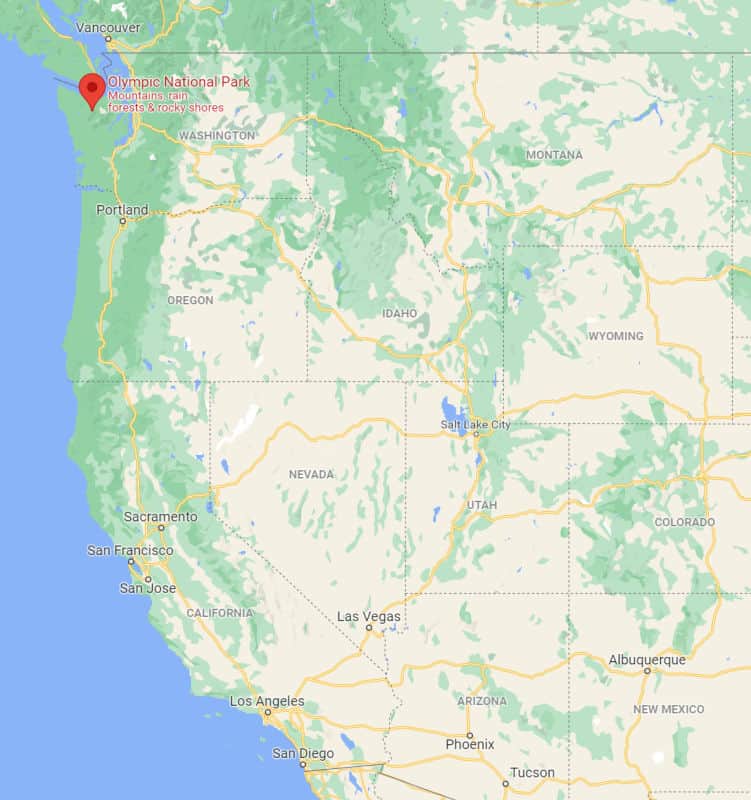
Where is Olympic National Park?
The majestic Olympic National Park is located on the west coast of Washington State, bordering the Pacific Ocean in the Pacific Northwest. It covers most of the Olympic Peninsula and is sandwiched by the Pacific Ocean coastline and Puget Sound, with elevation ranging from sea level up to the 7,983 foot summit of Mount Olympus.
Estimated distance from major cities nearby
Seattle, Washington - 111 miles
Portland, Oregon - 162 miles
Spokane, Washington - 370 miles
San Francisco, California - 796 miles
Estimated Distance from nearby National Park
Mount Rainier National Park - 117 miles
North Cascade National Park - 217 miles
Crater Lake National Park - 393 miles
Glacier National Park - 641 miles
Yellowstone National Park - 831 miles
Grand Teton National Park - 954 miles
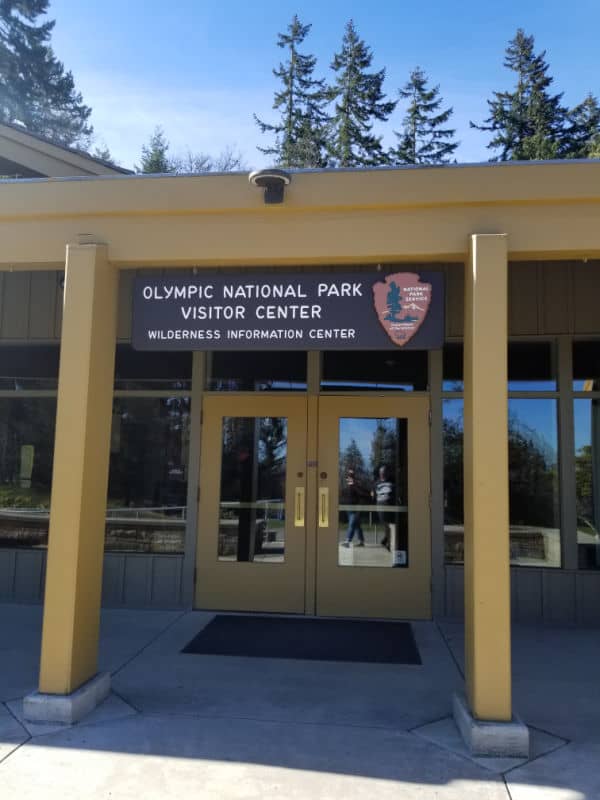
Where are the National Park Visitor Centers?
Olympic National Park Visitor Center
Located at 3002 Mount Angeles Road, Port Angeles, WA 98362
Open daily, hours can vary based on the season. Phone: (360) 565-3130 for information on seasonal hours and more.
Wilderness Information Center (Backcountry Permit Office)
Located within Olympic National Park at 3002 Mount Angeles Road, Port Angeles, WA 98362. Phone: (360) 565-3100. It is open daily in the summer, but hours may vary.
Hurricane Ridge Visitor Center
Located about 17 miles south of Port Angeles, on Hurricane Ridge Road.
Open daily in Summer; hours vary the remainder of the year.
It houses visitor information, exhibits detailing information about the Olympic mountains, a passport stamping station, and a snack bar and gift shop open seasonally.
The visitor center also offers guided walks and informative tours in the summer season.
Hoh Rain Forest Visitor Center
Located approximately 31 miles south of Forks off Highway 101, Phone: (360) 374-6925. It is open daily in Summer, on weekends off-season, and closed in January and February.
Hours vary according to the season. Here you can find visitor information, interactive exhibits, a passport stamping station, and even a bookstore.
Two self-guided nature trails and the well-known Hoh River Trail start near this visitor center. In the summer, guided tours and informational tours are offered.
Kalaloch Ranger Station
Located at 156954, US Highway 101, Forks. Phone: (360) 962-2283. It is open daily in the summer and closed for fall and winter. The hours and days vary in the Spring.
You'll find visitor information about the coastal region and the west end of the Olympic Peninsula, a passport stamping station, and a bookstore, along with guided talks and walks in the summer season.
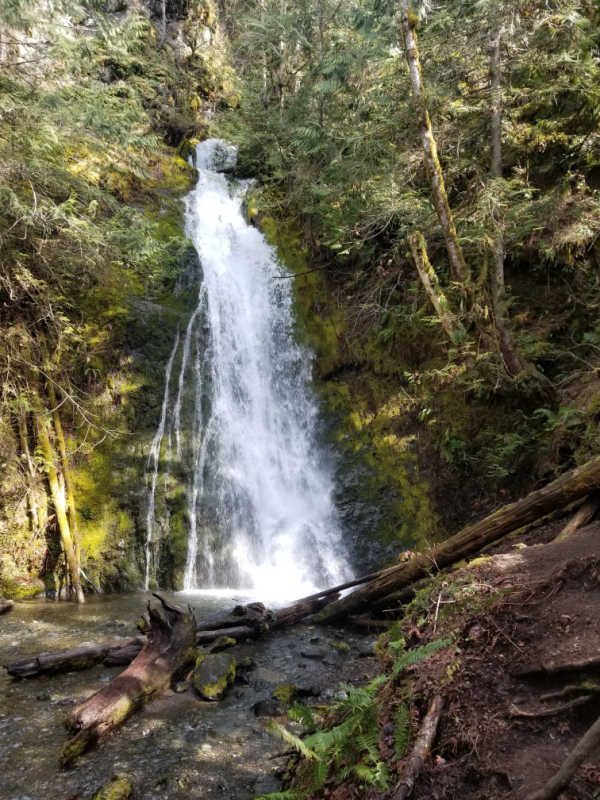
Getting to Olympic National Park
Closest Airports
Seattle Tacoma International Airport (SEA) - 103 miles
Victoria International Airport, Canada (YYJ) - 128 miles
Portland International Airport (PDX) - 161 miles
Regional Airports
Sequim Valley Airport - 77 miles
William R Fairchild International Airport - 80 miles
AJ Eisenberg Airport - 83 miles
Driving Directions
You can reach Olympic National Park via the Interstate 5 North corridor or state roadways. Once you arrive on the Olympic Peninsula, you'll connect to Highway 101 to reach any destinations within and around Olympic National Park.
- From Olympia: Take Interstate 5 to Highway 101
- From Tacoma: Take State Route 16 to Bremerton; take State Route 3 north from Bremerton to State Route 104; be aware that State Route 104 crosses the Hood Canal Bridge, which closes periodically for boat traffic.
- From Washington/Oregon Coast: Connect to Highway 101 via Aberdeen.
The Washington State Ferries system has many routes that access the Olympic Peninsula via Puget Sound. Several port destinations will get you across the sound and on your way to Olympic National Park.
Be sure to check road conditions and travel advisories before your visit, especially since the Olympic Peninsula can face harsh weather conditions like 12 feet of rainfall annually.
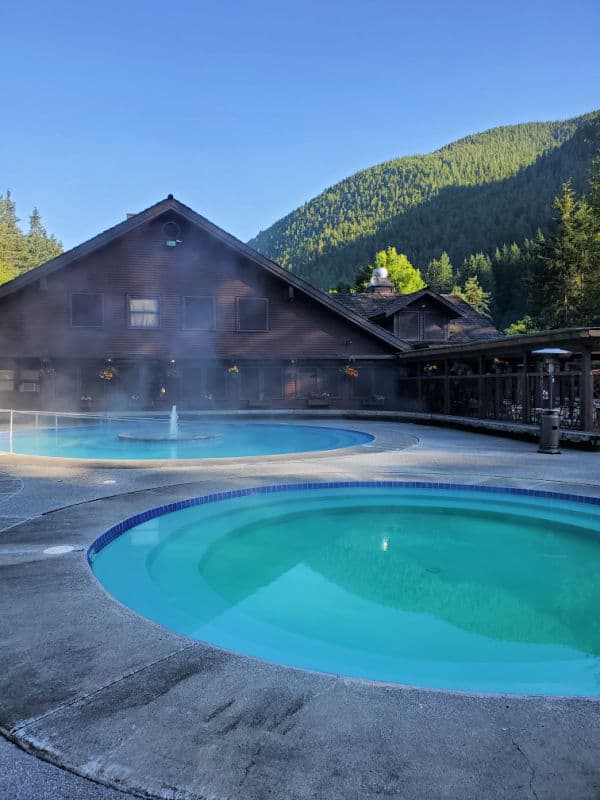
Best time to visit Olympic National Park
Summer is the most popular time to visit the park. The snow has melted and the trails are open.
There can be crowds at major attractions including the Hoh Rainforest and Hurricane Ridge.
We prefer to visit the park during the shoulder seasons. Fall and Late Spring are a great time to explore the park.
There can still be closures due to weather but the majority of the park is accessible.
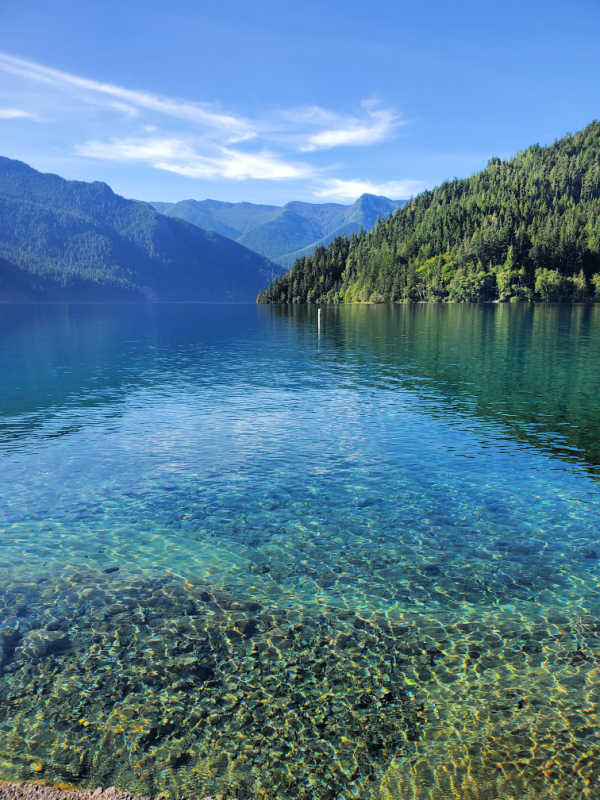
Olympic National Park Weather and Seasons
The Olympic National Park is an all-weather park, and your experience is sure to be enjoyable no matter when you visit; however, visiting at different times of year will lead to varied experiences and activities.
Spring
The temperatures rise after a harsh winter, and the weather becomes slightly warmer. Rainfall and snowfall can be expected well until June. A lot of the seasonal campgrounds begin to open, the flowers start blooming again, and you can hear the chirping of the birds. The snow is still fresh on the peaks, and there's nothing more picturesque than a rejuvenating thick green forest with a backdrop of snow-clad mountains.
Many of the trails may still not be accessible post-winter due to snow and fog, so be sure to check the exact weather conditions at the time of visit.
Summer
The most popular time to visit the Olympic National Park, the Summer season is the best season to explore all the region offers. It's the best season for hiking, backpacking, fishing, boating, and so much more! You'll enjoy scenic views of the mountains, forests, beaches, with gorgeous sunrises and sunsets in the months from June to September.
The temperature oscillates between mild and warm, and nearing the end of the season; visitors must be prepared for sudden rain.
However, the season is truly loved by locals and tourists alike, making it extremely crowded at this time of year, so if you're looking to avoid the crowds, this might not be the time for you!
Autumn/Fall
Believed to be a great time to visit post the heavy rains to avoid the crowds and be amidst gorgeous fall foliage. The temperature does begin to decline, and snowfall can occur as early as September. It's also a reasonably good time to witness some wild animals. However, with time, many trails and attractions begin closing due to rapidly dropping temperatures.
Winter
The weather gets pretty chilly with a lot of rain and snow. Hurricane Ridge itself averages 30-35 ft of snow and is open to visitors for skiing and other activities over the weekend if the weather allows. The Winter may also be a time of flooding, storms, avalanches, and more, so be careful and stay up-to-date on rapidly changing weather conditions.
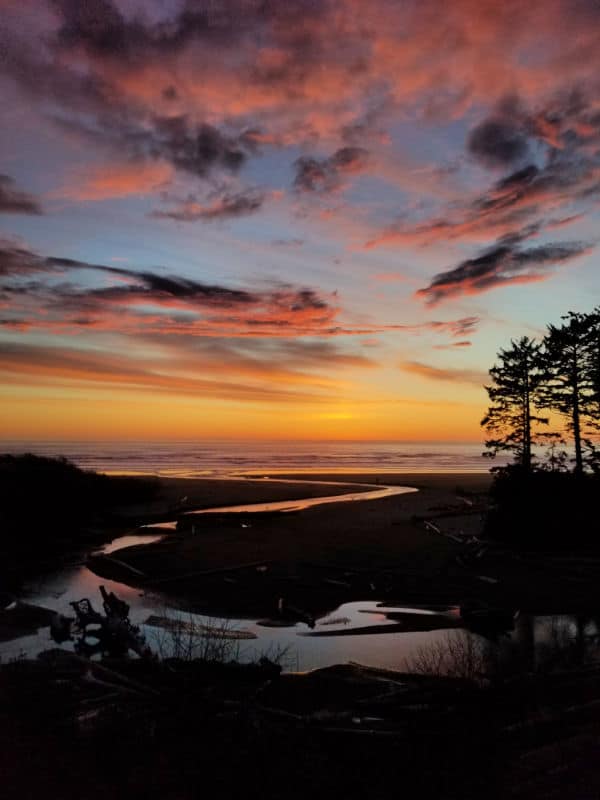
Best Things to do in Olympic National Park
There are so many things to do in Olympic NP! We highly suggest making a list of the top things you want to see during your visit.
The park is massive and it can take hours to get from one area to the next. Careful planning will help make sure you get to see as much as possible while in the park.
Hurricane Ridge
One of the most popular regions of the national park, Hurricane Ridge boasts panoramic views of the region, and if you visit on a clear day, you'll be able to see Canada and even further.
It's a beautiful area where you may spot Elk and will genuinely feel like you've landed in a dreamland, surrounded by picturesque mountains. The region gets 30-35 feet of snow and becomes ideal for snow activities!
Hoh Rainforest
This temperate rainforest is truly a gem of nature. Here you'll get to see Banana Slugs, Roosevelt Elk, Sitka Spruce, Western Hemlock Trees, and more! It gets up to 14 ft of rain annually, and some of the trees in the rainforest are over a thousand years old. It has several trails and walks within it, the most well-known being the Hall of Mosses!
Lake Crescent
A 625-feet deep lake, Lake Crescent is so clear that you'll be able to see over 50 feet deep into it! It is surrounded by two lodges, many campgrounds, and the region is home to many unique nature trails. You can choose to have a picnic by the lake and enjoy a meal with the peaceful lake and the striking mountains surrounding it.
Sol Duc Hot Springs
One of the must-do activities in the park, the Sol Duc Hot Springs housed in the Sol Duc Hot Springs Resort, look like regular hot tubs. Located near the Sol Duc Hot Springs River, the hot water from the hot springs is routed directly into the pools. A soak in one of them is sure to soothe you and relax your muscles from all the walking and trekking you'll get up to during your visit.
Kalaloch Beach
A beautiful beach with some tide pools (though there are better ones at Ruby beach), Kalaloch beach is a great place to visit during your time at the national park. The sand is pristine and feels lovely to walk through, and you may even spot a bald eagle during your time there. Be sure to check out the famous Tree of Life (a majestic tree that's grown into a cave) while you're there.
Lake Quinault
A scenic drive will lead you to Lake Quinault, between the Olympic National Park and Olympic National Forest, so you'll get a chance to visit both! This glorious lake region has several trails, campgrounds, and even a lodge on its Southern shore.
Wildlife viewing
Well-known wildlife within the park includes Roosevelt Elk, Black Bears, Moutain Lions (they make an appearance once in a blue moon), Bald Eagles, Sea Lions, Marmots, and more. Be sure to read up on their habitats if you're itching to observe some wildlife, but make sure you keep in mind that you're in their home instead of vice-versa, and practice caution in case of a sighting.
Junior Ranger Program
You can pick up a Junior Ranger program at any visitor center within Olympic National Park. The National Park also offers discovery backpacks to enhance your park exploration. The Olympic National Park Ocean Steward Junior Ranger program is a fun, hands-on program for children aged four and up.
As an Ocean Steward, you'll get a chance to explore the coastal ecosystem of Olympic National Park, learn exciting new facts about this unique region, and understand how you can help protect Olympic National Park's wilderness coast and ocean.
Bird Watching
Over 250 birds call Olympic National Park, and the neighboring waters their home and can be spotted throughout the region. Some notable species are Varied Thrush, Steller's Jay, Gray Jay, Blue Grouse, Belted Kingfisher, Winter Wren, and so many more.
Guided Tours
From Seattle - Small Group Tour of Olympic NP
Explore the rugged and beautiful World Heritage Site, the Olympic NP, with your small group in a comfortable van, an award-winning local guide, a beautiful lunch, snacks, and drinks.
From Seattle - Private Tour of Olympic NP with Hurricane Ridge
Immerse yourself in the scenic forests, mountains, and waterways of the Pacific Northwest on a private full-day tour from Seattle. Enjoy entry tickets to the Olympic NP and Hurricane Ridge.
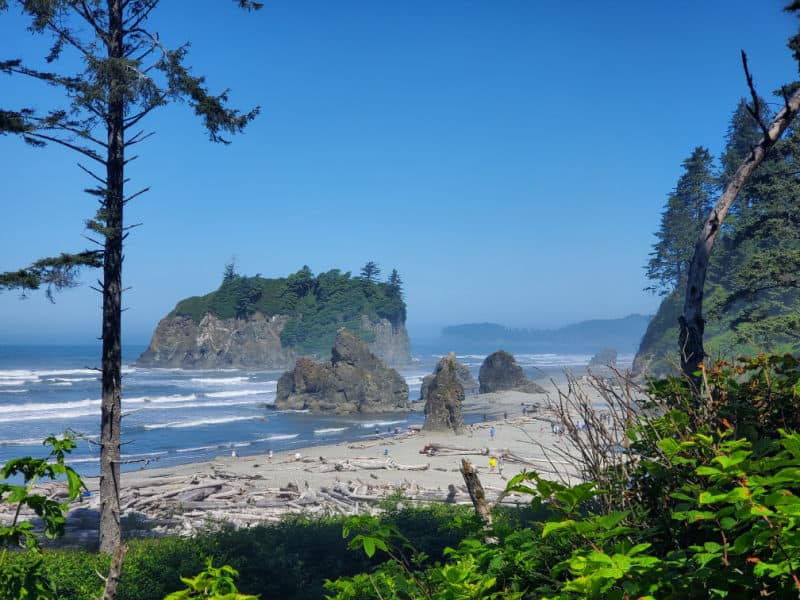
Hiking in Olympic National Park
There are so many hiking opportunities in the vast Olympic National Park. Regardless of the ones you choose to undertake, depending on your skill level, always remember to carry the 10 essentials for outdoor survival when exploring. Some notable ones are:
Sol Duc Falls Trail
This hike is in the park's Northern region and is accessible for hikers of all skill levels. It goes through the magnificent forest and ends by the breathtaking 50 ft waterfall. It is a 1.6-mile round trip hike that will take you between 1.5 to 2 hours. With a wooden bridge, a cute log cabin near its end, and other marvels, it's a hike you can't miss!
Marymere Falls Trail
This trail has an unbeatable view of the 90-ft tall Marymere Falls and has several unique features. It includes two bridges, a stream you cross over, and more. A 1.7-mile round trip hike, it'll take around two hours, depending on your skill level. It has a fair incline, so it may not be the easiest for all, especially those with knee or back issues.
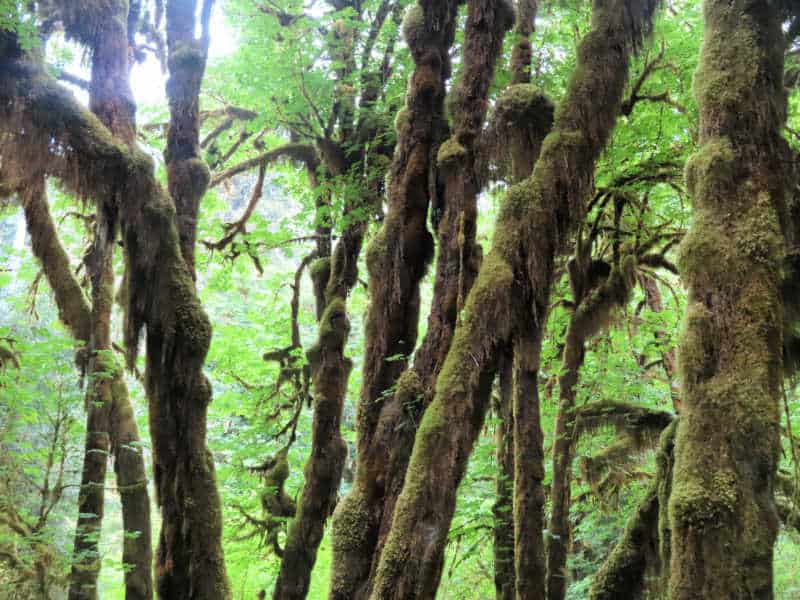
How to beat the crowds in Olympic?
The Olympic National park is one of the most visited National parks in the country, so it's unlikely that you'll ever find the place completely deserted; however, it is the most packed in the Summer months.
If you choose to visit during the summer, it's best to arrive at the park before 10 am or after lunchtime to avoid large crowds. With the long summer days, you'll observe that the groups reduce as time goes on, nearing dinnertime.
If you genuinely want to explore every part of the park, you're going to need to take multiple visits (like we do); however, you'll need two to three days at once.
So once you decide on which part of the park you'd like to explore, you can best plan your arrival either early or late in the day, since the park is open 24 hours.
It's best to visit major attractions like Lake Crescent, Ruby Beach, Rialto Beach, Hurricane Ridge, the Hoh Rain Forest, and more either early or late in the day as the parking spots fill up super quick in the summer.
In the fall or winter months, many of the campgrounds, lodges, and even attractions may not be open. However, the winter months bring in an array of snow-related activities like skiing, snowboarding, etc., for those interested in exploring the park when it's snowed in.
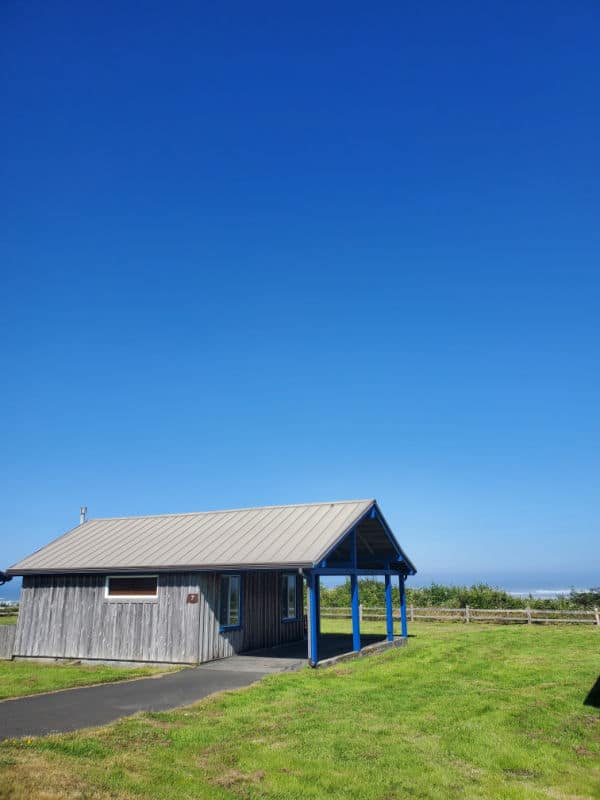
Where to stay when visiting Olympic National Park
There are multiple National Park Lodges within the park. Deciding on which lodge to stay in will largely depend on what part of the park you plan to explore because it certainly is one of those National Parks that you'll visit multiple times and still have something new to see (like we do!)
Kalaloch Lodge
Season: Year-round
Location: Along Highway 101 on the Pacific Ocean
The Kalaloch Lodge is a perfect place to stay while exploring the Olympic Peninsula and was indeed one of our favorite National Park Lodges we've ever stayed at. With well-equipped rooms and unbeatable views of Kalaloch Beach, you're sure to fall in love with this lodge.
Lake Crescent Lodge
Season: May to January
Location: Beside Lake Crescent, approximately 30 minutes from Port Angeles, Washington
The Lake Crescent Lodge boasts phenomenal views of Lake Crescent and offers a variety of accommodating options like cottages, lodge rooms, single tavern cottages, and more for you to choose from. If you end up deciding on a cottage (like we did), you'll get a chance to catch the gorgeous sunsets over the lake from your front porch. You can also rent kayaks from the property to go kayaking on the lake.
Log Cabin Resort
Season: May to September
Location: On the shore of Lake Crescent, 30 minutes from Port Angeles, Washington
The Log Cabin Resort includes chalets, camper cabins, RV/tent-camping sites, and more with stellar views of Lake Crescent. We stayed in a 2 Bedroom Kitchenette Cabin and had a great time at the place, which was spacious, had all the essentials, and a picnic table with a view, right outside the room.
Sol Duc Hot Springs Resort
Season: Mid-April to the end of October
Location: Right by the Sol Duc Hot Springs
The Sol Duc Hot Springs Resort is a rustic, serene property located by the hot springs. With a reservation at this resort, you'll also get access to swim in the hot springs, which was undoubtedly the highlight of our stay there. The property's prime location in the forested region also gives you easy access to the nearby trails, the Sol Duc Falls, River, and Valley.
Lodging near Olympic NP
Olympic NP borders multiple gateway communities including Port Angeles, Sequim, Port Townsend, La Push, Olympia, Forks, and Shelton.
Lake Quinault Lodge - At Lake Quinault Lodge, you can look forward to golfing on site, a terrace, and shopping on site. For some rest and relaxation, visit the sauna. The onsite family restaurant, Roosevelt Room, features American cuisine. In addition to a firepit and mini golf, guests can connect to free in-room Wi-Fi. Available to book on Expedia
Tree house at Twilight Beach - Stunning Tree house looking over the Strait of Juan De Fuca is a total North-West Washington experience. It is made of cedar with rustic touches. Once you are inside you will never want to leave as the floor to ceiling window looks onto the straight and with constant moving landscape of cruise ships, wildlife, and bald eagles soaring across your window.
Olympic Inn & Suites - located in Port Angeles. Olympic Inn & Suites provides everything you need. Stay connected with free in-room Wi-Fi.
Red Lion Hotel Port Angeles Harbor - Take advantage of dry cleaning/laundry services, a fireplace in the lobby, and a bar at Red Lion Hotel Port Angeles Harbor. This hotel is a great place to bask in the sun with a beachfront location. Be sure to enjoy a meal at 48° North, the onsite restaurant. Free in-room Wi-Fi is available to all guests, along with a gym and a business center.
Quality Inn & Suites - Located in Sequim. Take advantage of a free breakfast buffet, dry cleaning/laundry services, and a gym at Quality Inn & Suites at Olympic NP. For some rest and relaxation, visit the hot tub. In addition to a business center, guests can connect to free in-room WiFi.
Olympic Railway Inn - located in Sequim. Stay in converted Caboose Train cars!!! Each caboose has a different theme!
Click on the map below to see additional hotel and vacation rental rates in the area.
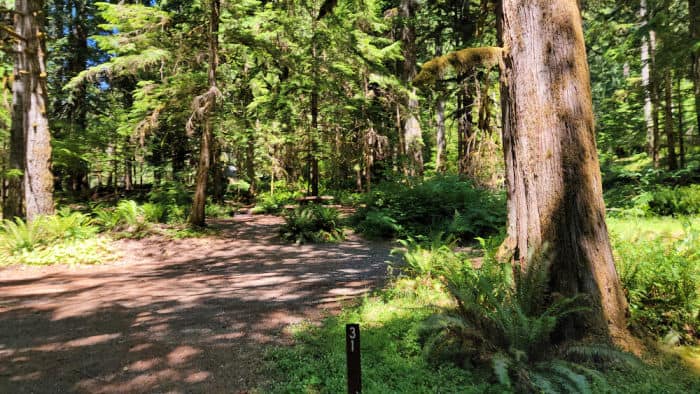
Olympic National Park Camping
There are multiple campgrounds spread throughout the park. Kalaloch, Mora, and the Hoh campground take reservations during the summer. All the other campgrounds work on a first-come, first-serve basis, so be sure you're there bright and early during the summer weekends as it can get quite busy!
Most campgrounds have RV spaces limited to 21 feet or shorter, while others have RV spaces that permit vehicles up to 35 feet.
Deer Park Campground
Season: June to Mid October
Campsites: 14 (RVs permitted)
It is the highest campground in the region, and you're sure to notice a temperature drop once you reach there. It has a picnic table, a fire pit, pit toilets and costs $15/night.
Dosewallips Campground
Season: Year-round
Campsites: 30 (tent-only)
It is a 6.5-mile walk to the campground, located on the East side of the park. It has a picnic table, a fire pit, pit toilets and is free of cost.
Fairholme Campground
Season: April to September
Campsites: 88 (RVs permitted - up to 21ft)
It is a top-rated site located on the edge of Lake Crescent. It has a flush toilet, potable water, picnic tables, fire grates and costs $20/night.
Graves Creek Campground
Season: Year-round
Campsites: 30 (RVs not permitted)
Located by Lake Quinault and surrounded by moss trees, it is another favorite amongst those who want to get lost entirely within nature. It has a pit toilet, picnic tables, fire grates, and no running water and costs $22/night.
Heart O' the Hills Campground
Season: Year-round, it is walk-in during heavy snow
Campsites: 105 (RVs permitted; most spots for 21 ft, few for 35ft)
The closest campground to Port Angeles, Washington, is extremely popular among those hoping to explore the park's northern region. It has a pit toilet, potable water, picnic tables, fire grates and costs $20/night.
Hoh Campground
Season: Year-round
Campsites: 72 (RVs permitted; most spots for 21 ft, few for 35ft)
If you're looking for a chance to camp amidst the rainforest, there's no place other than the Hoh Campground! You'll be among the thick trees and amidst herds of Elk, but within a temperate rainforest, so be prepared for cool evenings and chilly weather. It has a flush toilet, potable water, picnic tables, fire grates, and costs $20/night.
Kalaloch Campground
Season: Year-round
Campsites: 170 (RVs permitted)
It is located by the Kalaloch beach and is within proximity of the Kalaloch Lodge. Here you'll be able to drift off the sleep to the sound of crashing waves and enjoy a scenic view. It has flush toilets, running water, picnic tables, fire pit, and costs $20/night.
Mora Campground
Season: Year-round
Campsites: 94 (RVs permitted; most spots for 21 ft, few for 35ft)
Located by the Rialto beach, from here, you'll have easy access to the beach at all times of the day. You'll also be able to enjoy scenic views of the Quillayute River and the coastal forested areas. The campsite has flush toilets, potable water, fire pits, picnic table and costs $20/night.
North Fork Campground
Season: Year-round
Campsites: 9 (RVs & trailers not recommended)
Located right by the Quinault River, this is a small campsite particularly enjoyed by those looking for a peaceful, isolated spot to spend the night. It has pit toilets, fire pits, and picnic tables and costs $15/night)
Ozette Campground
Season: Year-round unless some flooding happens
Campsites: 15 (RVs permitted - up to 21 ft)
It is located by Ozette Lake and is the quintessential campground if you want a serene area far from any grocery stores, gas stations, or other signs of civilization really, so be prepared with all your food and other essentials. The site has pit toilets, fire pits, picnic tables and costs $20/night.
Queets Campground
Season: Year-round
Campsites: 20 (RVs & trailers not recommended)
Another option for those looking for a peaceful spot away from the grounds is located off Highway 101 besides the Queets rainforest, which you'll be easily able to access. It has pit toilets, fire pits, picnic tables and costs $15/night.
Sol Duc Hot Springs RV Campground
Season: April to October
Campsites: 82 & a gravel lot with 17 RV sites
Located by the Sol Duc Hot Springs, you'll have a chance to explore the Valley River and soak in the hot springs! It has drinking water, flush toilets, fire rings, and picnic tables and costs $21/night (for RV sites, $40/night).
South Beach Campground
Season: May to September
Campsites: 55 (RVs permitted; most spots for 21 ft, few for 35ft)
Located off of Highway 101, just down from Kalaloch Campground, it is an ideal place if you're looking for a beach campsite. You'll have fantastic views of the beach, the pink-orange-hued sky during sunset, and be able to sleep to the sound of the waves. It has flush toilets, fire pits, picnic tables and costs $15/night.
Staircase Campground
Season: Year-round, but some facilities are paused in the Winter
Campsites: 49 (RVs permitted; most spots for 21 ft, few for 35ft)
Located in the Eastern part of the National Park, beside the Skokomish River and submerged within tall firs, it is a serene campground. It has flush toilets, potable water, fire pits, and picnic areas and costs $20/night.
Backcountry Camping
Wilderness Camping Permits are required for all overnight trips into the Olympic National Park. The fee for each Wilderness Campground Permit is $8 per person, per night for groups of up to 12 people (plus $6 per permit cost). There is no charge for youth 15 years and under, but they still count towards group size. For more information on camping in the wilderness, be sure to look at the Wilderness Trip Planner.
You'll be able to collect your Wilderness Camping Permits at the Port Angeles Wilderness Information Center, Quinault Wilderness Information Center, or Hoodsport Wilderness Information Center. The opening hours of these wilderness centers vary according to season.

For a fun adventure check out Escape Campervans. These campervans have built in beds, kitchen area with refrigerators, and more. You can have them fully set up with kitchen supplies, bedding, and other fun extras. They are painted with epic designs you can't miss!
Escape Campervans has offices in Vancouver, Seattle, Portland, San Francisco, Las Vegas, Los Angeles, Phoenix, Salt Lake City, Denver, New York, and Orlando
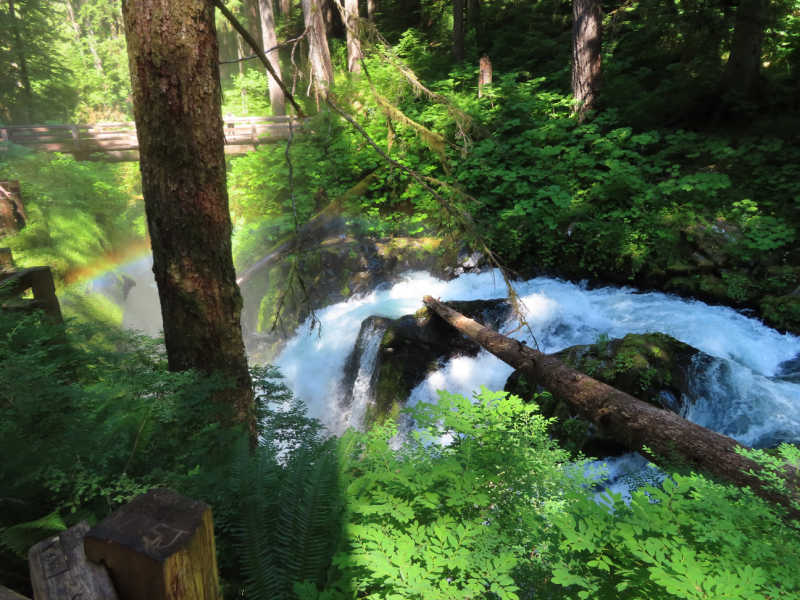
Travel Tips
Plan for a lot more time than you think you will need to see the park! The park is huge and it can take a while to drive from point A to point B.
Dress in layers. Depending on where you are in the park you could be getting rained on, getting sprayed with ocean spray or playing near the snow.
Forks is near Olympic National Park and was the setting for the Twilight movies. You can still some signs and markers that were created to celebrate the books.
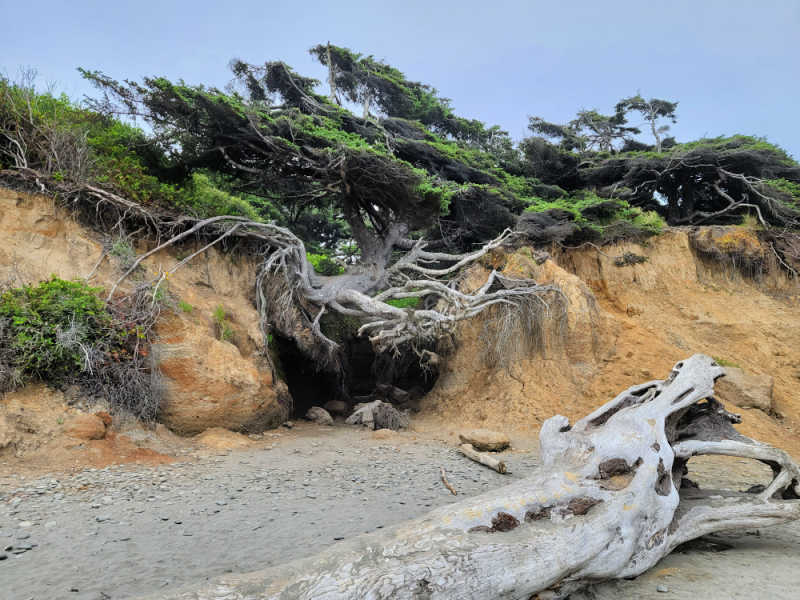
Olympic National Park Facts
Olympic National Park was established in 1938
In 1981, Olympic National Park was designated a UNESCO World Heritage Site.
In 1988, Congress designated 95% of Olympic National Park as a National Wilderness Preservation area.
The removal of two dams on the Elwha River was the 2nd largest ecosystem restoration project performed by the National Park System.
The Hoh Rainforest receives on average 170 inches of rain annually.
Parks near Olympic National Park
San Juan Island National Historical Park
Ebey's Landing National Reserve
Lewis and Clark National Historical Park
Fort Vancouver National Historic Site
Check out all of the National Parks in Washington along with neighboring National Parks in Idaho, National Parks in Oregon, Hawaii National Parks, and Alaska National Parks
Make sure to follow Park Ranger John on Facebook, Instagram, Pinterest, and TikTok
National Park Service Website

